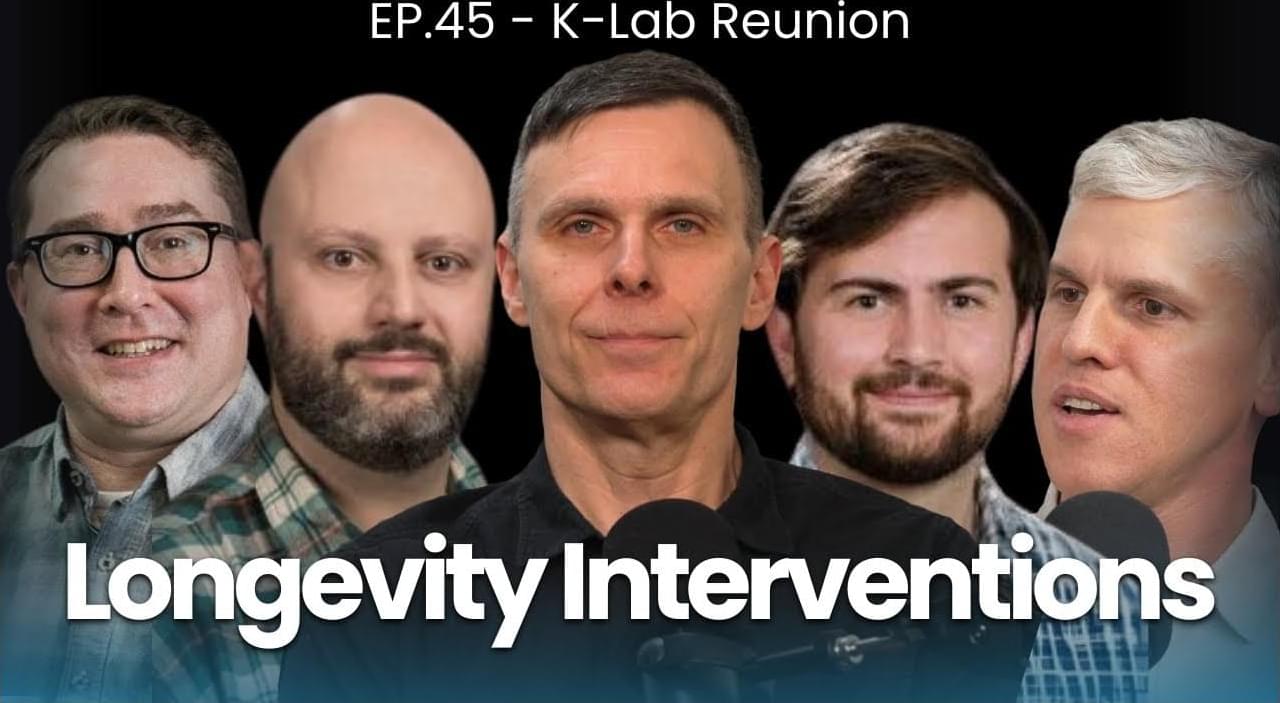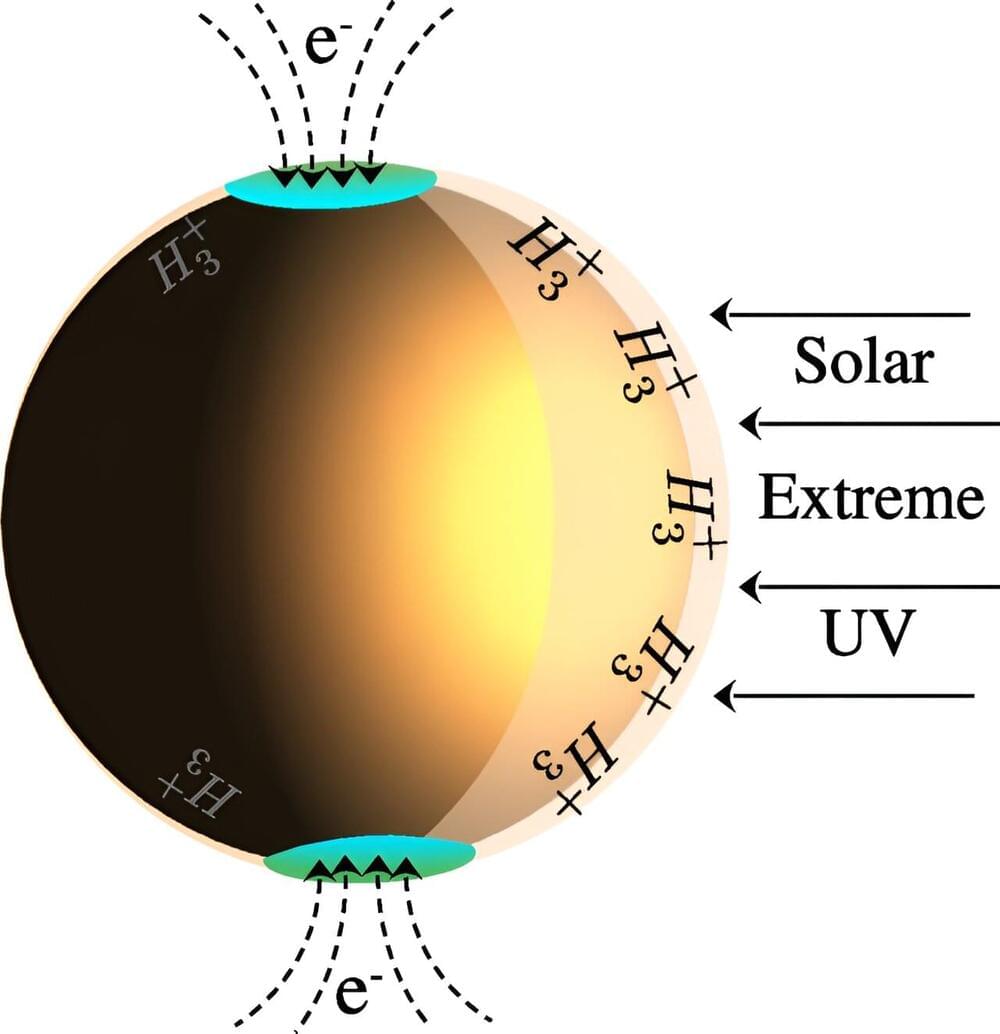Page 312
Jul 2, 2024
Daily multivitamin supplements don’t help you live longer, study shows
Posted by Roman Kam in category: futurism
Rather than living longer, otherwise healthy people who took daily multivitamins were slightly more likely (4%) than non-users to die in the study period, according to researchers.
Researchers reported nearly 165,000 deaths occurring during the follow-up period of the study, out of the initial group of 390,000 participants.
Jul 2, 2024
Scientists Discuss Longevity Interventions & Optimisms | 45 — K-Lab Reunion
Posted by Montie Adkins in categories: life extension, media & arts
Jul 2, 2024
Cisco warns of NX-OS zero-day exploited to deploy custom malware
Posted by Saúl Morales Rodriguéz in category: cybercrime/malcode
Cisco has patched an NX-OS zero-day exploited in April attacks to install previously unknown malware as root on vulnerable switches.
Cybersecurity firm Sygnia, who reported the incidents to Cisco, linked the attacks to a Chinese state-sponsored threat actor it tracks as Velvet Ant.
“Sygnia detected this exploitation during a larger forensic investigation into the China-nexus cyberespionage group we are tracking as Velvet Ant,” Amnon Kushnir, Director of Incident Response at Sygnia, told BleepingComputer.
Jul 2, 2024
Ray Kurzweil explains how AI makes radical life extension possible
Posted by Dan Breeden in categories: biotech/medical, life extension, Ray Kurzweil, robotics/AI
Most of our progress in disease treatment and prevention to date has been the product of the linear process of hit-or-miss efforts to find useful interventions. Because we have lacked tools for systematically exploring all possible treatments, discoveries under this paradigm have owed a lot to chance. Likely the most notable chance breakthrough in medicine was the accidental discovery of penicillin — which opened up the antibiotic revolution and has since saved perhaps as many as 200 million lives. But even when discoveries aren’t literally accidental, it still takes good fortune for researchers to achieve breakthroughs with traditional methods. Without the ability to exhaustively simulate possible drug molecules, researchers have to rely on high-throughput screening and other painstaking laboratory methods, which are much slower and more inefficient.
To be fair, this approach has brought great benefits. A thousand years ago, European life expectancy at birth was just in the twenties, since so many people died in infancy or youth from diseases like cholera and dysentery, which are now easily preventable. By the middle of the nineteenth century, life expectancy in the United Kingdom and the United States had increased to the forties. As of 2023, it has risen to over eighty in much of the developed world. So, we have nearly tripled life expectancy in the past thousand years and doubled it in the past two centuries. This was largely achieved by developing ways to avoid or kill external pathogens — bacteria and viruses that bring disease from outside our bodies.
Today, though, most of this low-hanging fruit has been picked. The remaining sources of disease and disability spring mostly from deep within our own bodies. As cells malfunction and tissues break down, we get conditions like cancer, atherosclerosis, diabetes, and Alzheimer’s. To an extent we can reduce these risks through lifestyle, diet, and supplementation — what I call the first bridge to radical life extension. But those can only delay the inevitable. This is why life expectancy gains in developed countries have slowed since roughly the middle of the twentieth century. For example, from 1,880 to 1900, life expectancy at birth in the United States increased from about thirty-nine to forty-nine, but from 1980 to 2000 — after the focus of medicine had shifted from infectious disease to chronic and degenerative disease — it only increased from seventy-four to seventy-six.
Jul 2, 2024
From chatbots to superintelligence: Mapping AI’s ambitious journey
Posted by Dan Breeden in categories: business, mapping, robotics/AI
With the pending arrival of AI agents, we will even more effectively join the always-on interconnected world, both for personal use and for work. In this way, we will increasingly dialog and interact with digital intelligence everywhere.
The path to AGI and superintelligence remains shrouded in uncertainty, with experts divided on its feasibility and timeline. However, the rapid evolution of AI technologies is undeniable, promising transformative advancements. As businesses and individuals navigate this rapidly changing landscape, the potential for AI-driven innovation and improvement remains vast. The journey ahead is as exciting as it is unpredictable, with the boundaries between human and artificial intelligence continuing to blur.
By mapping out proactive steps now to invest and engage in AI, upskill our workforce and attend to ethical considerations, businesses and individuals can position themselves to thrive in the AI-driven future.
Jul 2, 2024
Nanotechnology: Understanding the Tiny Science Shaping Our Future
Posted by Dan Breeden in categories: biotech/medical, nanotechnology, science
Discover the fascinating world of nanotechnology and its impact on our lives. Learn about the science on a tiny scale and how it revolutionizes medicine, electronics, and everyday products.
Jul 2, 2024
150-year-old conflict between Darwin and Wallace is resolved — by a machine
Posted by Dan Breeden in category: robotics/AI
In the 1800s, a conflict between the founding fathers of evolution divided the community. Charles Darwin believed sexual selection drove the variation in butterfly colors and patterns of males, while contemporary rival Alfred Russel Wallace disagreed, predicting that broader natural selection played as important a role.
Darwin was adamant that sexual selection was not part of natural selection but solely related to differences in mating success. Natural selection covers a broader range of factors that contribute to an individual’s overall ‘fitness.’
In 2,024,150 years or so after these two iconic British evolutionary scientists began their heated rivalry over who was right, researchers have employed machine learning to settle the score. Scientists from the University of Essex, in collaboration with the Natural History Museum and AI research institute Cross Labs, Cross Compass, have used AI to analyze “sexual and interspecific variation” found across 16,734 dorsal and ventral images of birdwing butterflies.
Jul 2, 2024
Infrared glow high in Jupiter’s atmosphere may be dark matter particles colliding
Posted by Dan Breeden in categories: cosmology, particle physics
A pair of astrophysicists with Princeton University and the SLAC National Accelerator Laboratory found possible evidence of dark matter particles colliding. In their study, published in Physical Review Letters, Carlos Blanco and Rebecca Leane conducted measurements of Jupiter’s equatorial region at night to minimize auroral influences.
Since it was first proposed back in the 1930s, dark matter has been at the forefront of physics research, though it has yet to be directly detected. Still, most in the field believe it makes up roughly 70% to 80% of all matter in the universe. It is believed to exist because it is the only explanation for odd gravitational effects observed in galaxy motion and the movement of stars.
Researchers posit that it might be possible to detect dark matter indirectly by identifying the heat or light emitted when particles of dark matter collide and destroy each other. In this new study, the researchers found what they believe may be such an instance—light in Jupiter’s dark-side outer atmosphere.

















